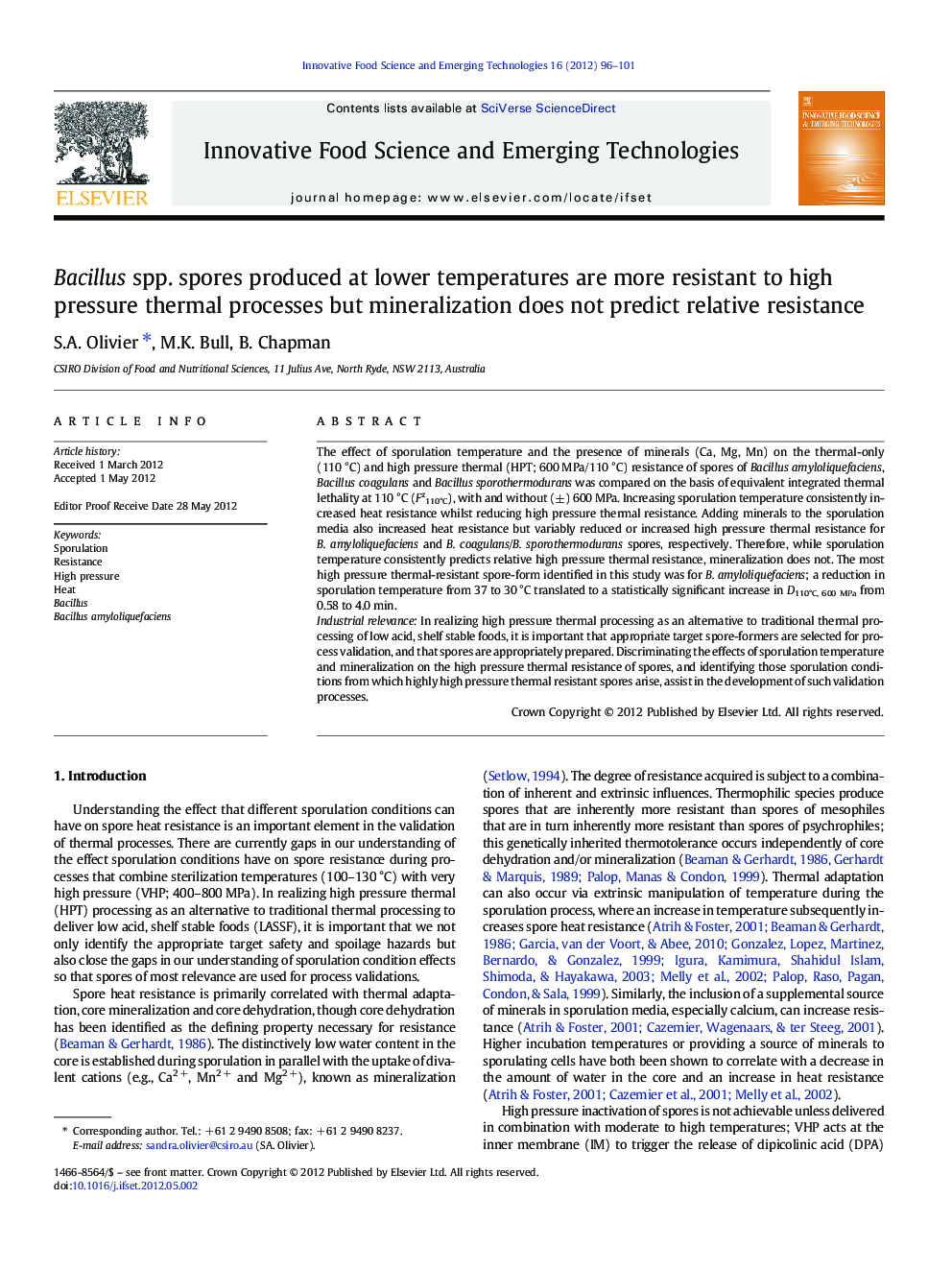| Article ID | Journal | Published Year | Pages | File Type |
|---|---|---|---|---|
| 2087145 | Innovative Food Science & Emerging Technologies | 2012 | 6 Pages |
The effect of sporulation temperature and the presence of minerals (Ca, Mg, Mn) on the thermal-only (110 °C) and high pressure thermal (HPT; 600 MPa/110 °C) resistance of spores of Bacillus amyloliquefaciens, Bacillus coagulans and Bacillus sporothermodurans was compared on the basis of equivalent integrated thermal lethality at 110 °C (Fz110°C), with and without (±) 600 MPa. Increasing sporulation temperature consistently increased heat resistance whilst reducing high pressure thermal resistance. Adding minerals to the sporulation media also increased heat resistance but variably reduced or increased high pressure thermal resistance for B. amyloliquefaciens and B. coagulans/B. sporothermodurans spores, respectively. Therefore, while sporulation temperature consistently predicts relative high pressure thermal resistance, mineralization does not. The most high pressure thermal-resistant spore-form identified in this study was for B. amyloliquefaciens; a reduction in sporulation temperature from 37 to 30 °C translated to a statistically significant increase in D110°C, 600 MPa from 0.58 to 4.0 min.Industrial relevanceIn realizing high pressure thermal processing as an alternative to traditional thermal processing of low acid, shelf stable foods, it is important that appropriate target spore-formers are selected for process validation, and that spores are appropriately prepared. Discriminating the effects of sporulation temperature and mineralization on the high pressure thermal resistance of spores, and identifying those sporulation conditions from which highly high pressure thermal resistant spores arise, assist in the development of such validation processes.
► Sporulation conditions were varied to produce spores of Bacillus spp. ► Thermal-only and high pressure thermal resistance were determined based on Fz110°C. ► Lower sporulation temperature selects spores that are more HPT resistant. ► B. amyloliquefaciens was the most HPT-resistant species.
